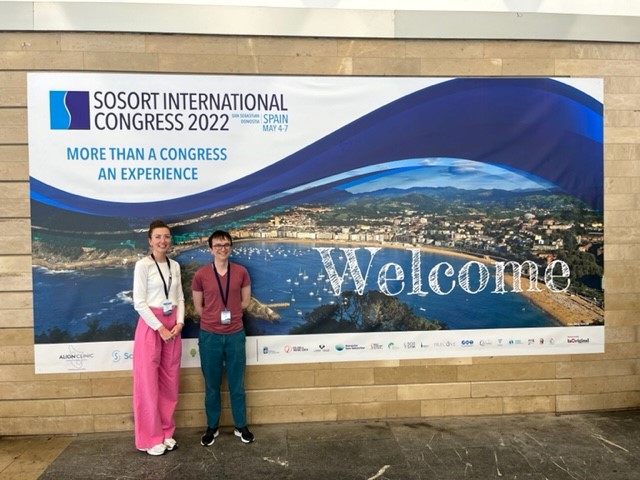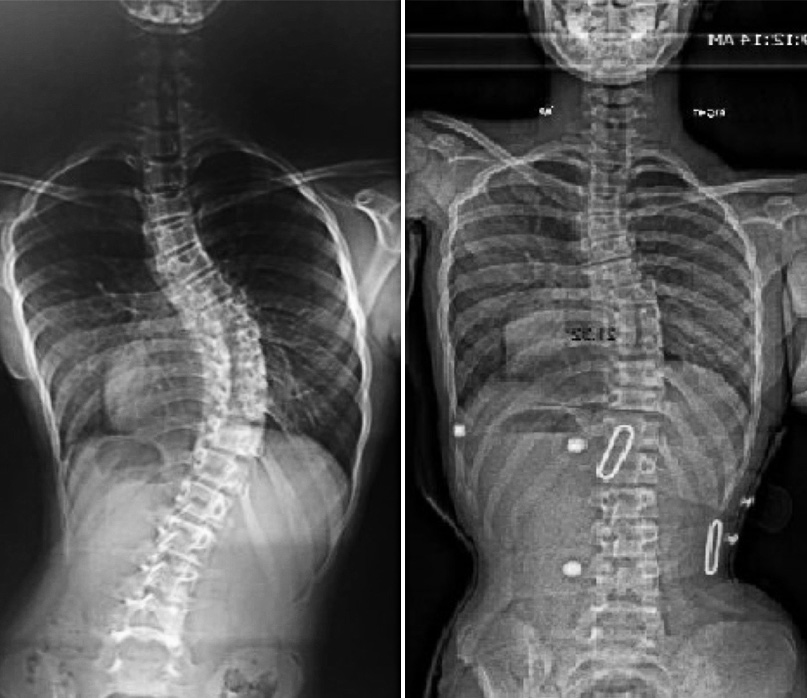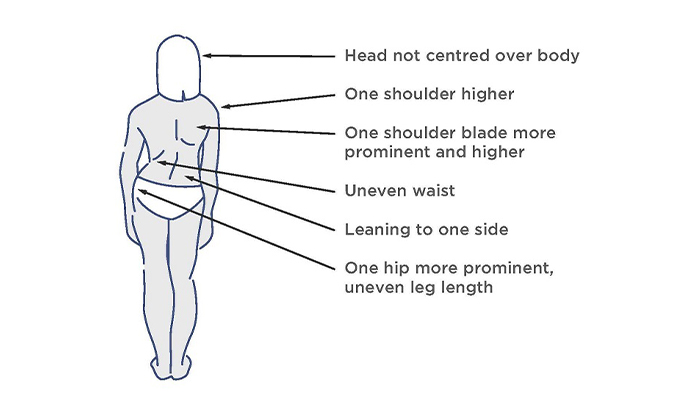
LOC clinicians Anna Courtney and George Coles at SOSORT annual conference 2022
03 February 2023
LOC has been accepted to present its scoliosis work at SOSORT’s annual conference from the 1st to 5th May 2023 as part of the SpineWeek Congress in Australia.
SOSORT is the International Society on Scoliosis Orthopaedic and Rehabilitation Treatment. It was founded in 2006 with the belief that prevention and conservative management of scoliosis can be effective. This non-profit organisation is dedicated to disseminating evidence-based information about the non-surgical treatment of scoliosis.
The primary focus for this education is SOSORT’s annual conference which is being held this year in Melbourne and for the first time as part of the SpineWeek Congress. SpineWeek brings together over 24 of the world’s top spine-related societies to share their knowledge and research with each other.
LOC submitted three abstracts to SOSORT for consideration to be presented at this year’s Conference. We are delighted that all three have been accepted for oral presentation.
We look forward to presenting our scoliosis treatment findings on the following topics:
LOC’s presentations will be based on the quantitative evidence gathered from hundreds of UK patients since the launch of the LOC Scoliosis Brace. Like several other ‘modern’ braces, LOC's Scoliosis Brace is a Cheneau – Gensingen derivative. We have fine-tuned it based on feedback both from our patients and from spinal consultants we work with to ensure that we are achieving as much skeletal correction as possible in-brace for each patient while making our brace as comfortable as possible to wear.
This compares with Boston braces which achieve 50% and other asymmetric braces that are available in the UK, including the Chenau-Gensingen brace, which achieves around 50-65% correction.
Senior orthotist Jack Choong will be presenting these findings on behalf of LOC. LOC's presentations will be held on the 1st of May 2023, the first day of Spine Week 2023, in Melbourne.
We are looking forward to sharing its results with the thousands of scoliosis specialists expected at the Congress and to spearhead the advance in the management of conservative scoliosis treatment.

LOC patient with 80% in-brace skeletal correction.
Especially in young people, spotting the early signs of scoliosis is important – as is seeking early treatment. These are the warning signs to look out for:

Visual signs of Scoliosis
You can find out more about the visual signs of scoliosis here.
If your child has recently been diagnosed with scoliosis or if you have concerns about your child’s spine and you would like to find out more, read more about LOC’s bracing treatment here.
Most of the patients LOC see have what is termed idiopathic scoliosis - which means that there is no known medical cause for the condition. What we do know is that scoliosis tends to occur during periods of rapid body growth and adolescents account for over 80% of all diagnosed cases in children.
The LOC Scoliosis Brace is a 3D, hypercorrective, Cheneau-Gensingen derivative brace, known as one of the most corrective and modern scoliosis braces available in the UK. It is designed to:
The brace is entirely unique and tailored to the patient’s spinal curve pattern, ensuring optimal skeletal correction while prioritising comfort.
Unlike traditional braces, it opens from the front for easier self-application and maintains a low profile under clothing.
The LOC Scoliosis Brace is worn 22 hours a day (including nighttime) and works in conjunction with Schroth-based therapy for maximum results.
We are pleased to offer a free-of-charge, virtual assessment should you wish to be screened for scoliosis. If we feel a referral to an Orthopaedic Consultant is warranted, we recommend a consultation at The Wimbledon Clinic, Parkside with Mr Darren Lui, Mr Jason Bernard or Mr Tim Bishop. The consultant would arrange the imaging as required. Obviously, you can also seek advice from your family GP.
The operation used to treat severe scoliosis curves is typically spinal fusion surgery; a major procedure that involves moving muscles and realigning the skeleton into place. The curved, deformed vertebrae are fused together into a single bone, putting metal screws and rods into the spine to help straighten it. Surgery typically lasts between 4 and 8 hours depending on the severity of the curve. Bone graft is then taken from other parts of the body and used to cover the implants.
Following the operation, it is necessary to spend around a week in intensive care before returning home and the first few days are often uncomfortable. Most adolescents can expect to return to school from 2-4 weeks following surgery, but pain medication may be required up to 6 weeks following. A full recovery from the procedure can take up to a year, as it can take that long for the spine to heal fully.
Spinal fusion surgery causes the fused portion of the back to become permanently stiff, as a result, returning to sports that require large amounts of flexibility (ballet, yoga, gymnastics, dance) or contact (rugby, football, karate, hockey) may take longer.